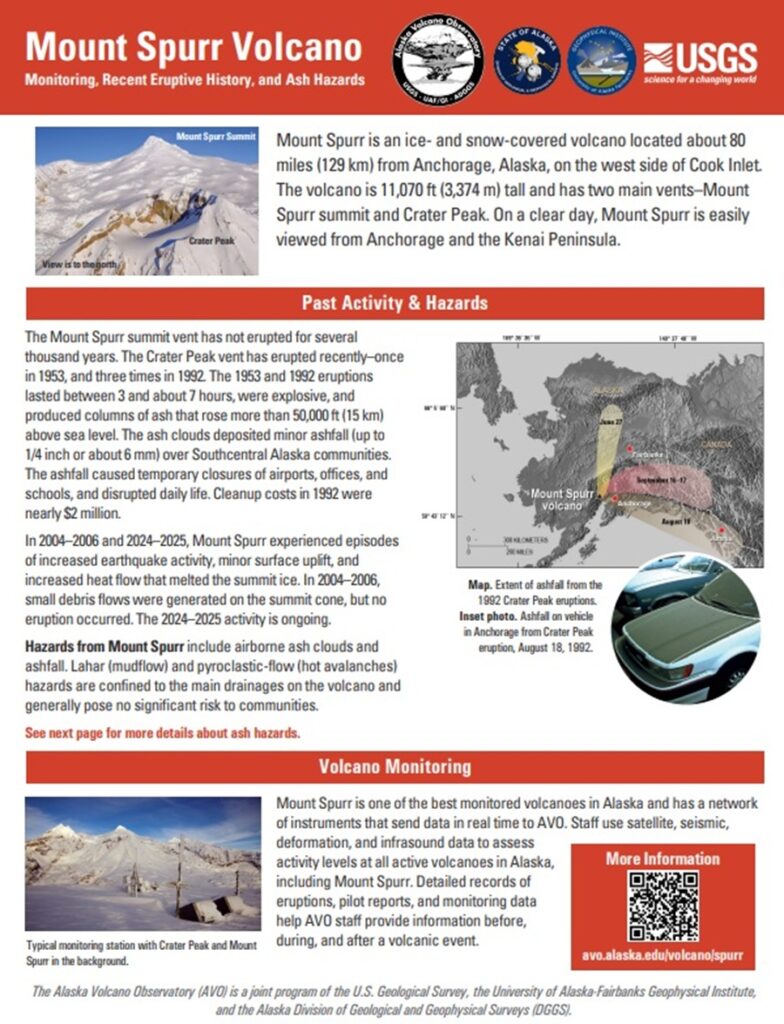
While Hawaii’s Kilauea volcano is erupting lava today and Washington’s Axial Seamount may erupt in the months ahead, USGS is providing advice to people ahead of another expected volcanic eruption expected soon; this next eruption would be Mount Spurr near Anchorage, Alaska. An eruption could be possible here in the days or weeks ahead.
USGS’s Alaska Volcano Observatory (AVO) wrote on X, “After last week’s announcement that the likelihood of a Mount Spurr eruption has increased, now is a good time for Alaska residents, especially in southcentral Alaska, to familiarize themselves with the possible hazards of a Spurr eruption.”
“The major hazards to Alaska residents from Spurr would be from ash risk to aviation and possible ashfall. The location, duration, and timing of the impacts would depend on the size and duration of the eruption as well as weather conditions during and afterwards,” wrote AVO.
During an eruption of Mount Spurr in 1992, Anchorage International Airport was closed for 20 hours and many other flights across the Pacific had to change their route. Anchorage’s airport is the fourth largest cargo airport in the world; meanwhile, 60,000 people fly around and through Alaska every day. Ash can severely damage aircraft engines; because of that, jets would be re-routed or grounded away from any possible interaction with volcanic ash in the air or on the ground should Mount Spurr erupt.
Ash is also hazardous to more than airplanes. Ash is abrasive and can hurt your eyes and lungs and machinery like cars, according to USGS. “More than a trace amount is heavy and ash clean-up is physically demanding,” AVO said. “If ashfall occurs, don’t panic, stay inside, wear a mask if you have to go out, and follow official guidance,” AVO added.
During recent Mount Spurr eruptions, up to 0.25″ ash fell on south-central Alaska. Facility closures and extensive clean-up were required. Two residents died from heart attacks while shoveling the heavy ash.
Other hazards are possible from a Mount Spurr eruption, but they would impact non-populated areas near the volcano itself. Pyroclastic flows and lahars would be possible there. A pyroclastic flow is a hot, high-speed flow of volcanic rocks, ash, and gas. According to AVO, the 1992 eruption produced many pyroclastic flows down the south flanks of the volcano, but fortunately, no one lived in those areas or were impacted by the flows.
Recent eruptions have also melted snow and glacial ice to make lahars which are volcanic mudflows. In the last eruption, a lahar flowed down the Chakachatna River. AVO writes, “These lahars luckily pose small risk because there are no nearby communities.”

